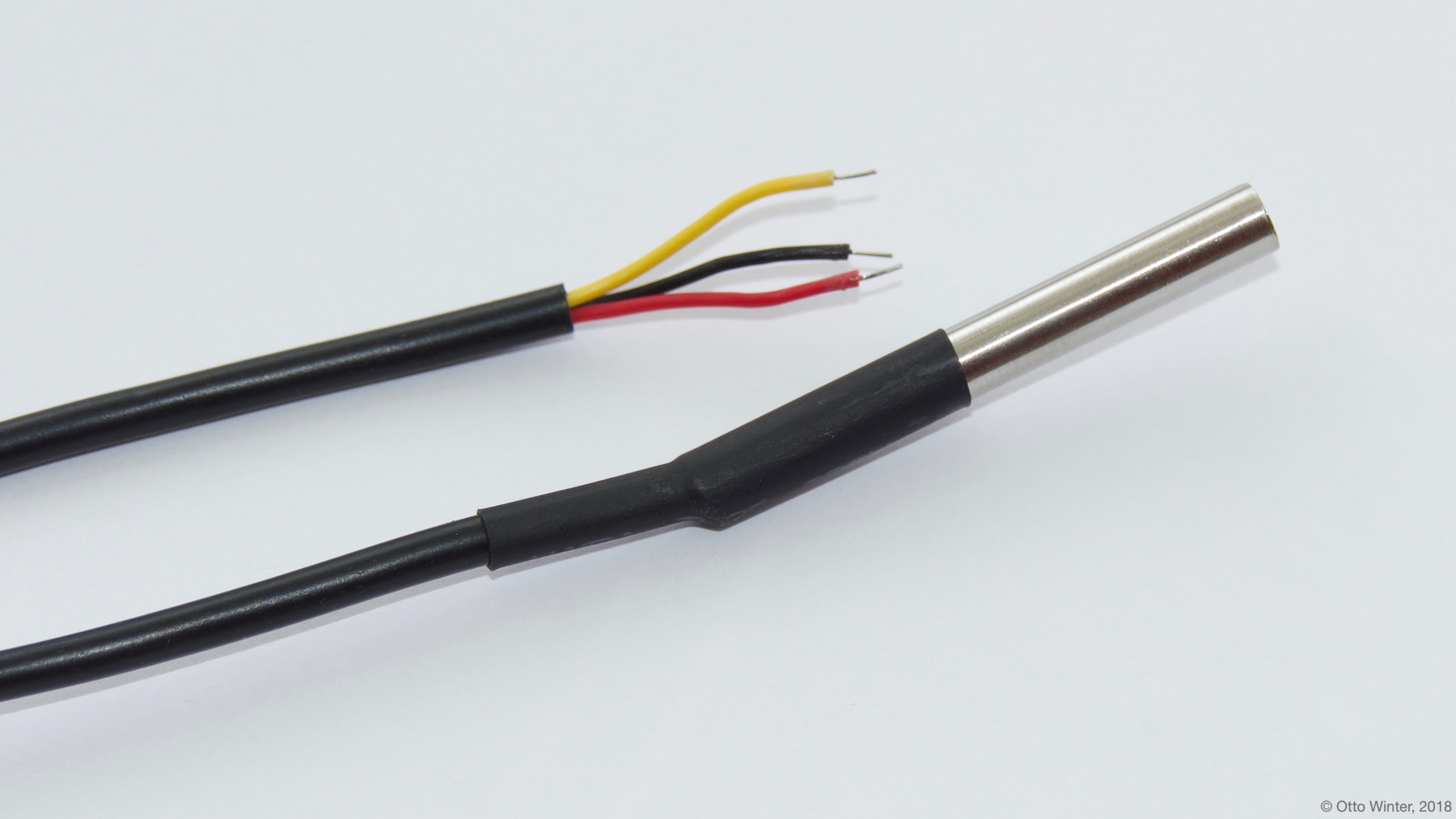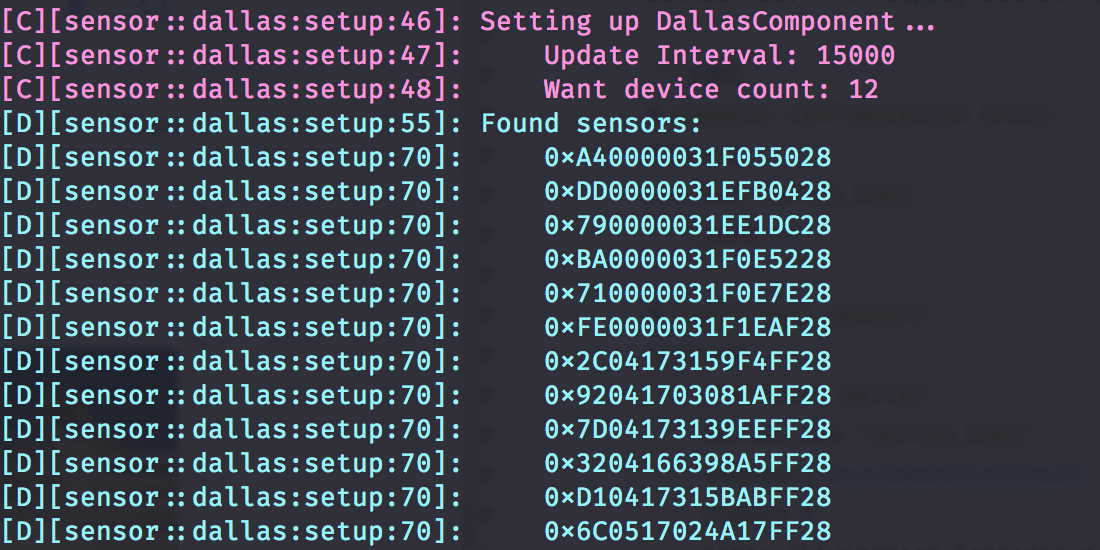Dallas Temperature Sensor¶
Component/Hub¶
The dallas component allows you to use your
DS18b20
(datasheet)
and similar 1-Wire temperature sensors.
To use your dallas sensor, first define a dallas “hub” with a pin and
id, which you will later use to create the sensors. The 1-Wire bus the
sensors are connected to should have an external pullup resistor of
about 4.7KΩ. For this, connect a resistor of about 4.7KΩ between 3.3V
and the data pin. Values ± 1KΩ will, in most cases, work fine as well,
if you don’t have massively long wires.
# Example configuration entry
dallas:
- pin: 23
# Individual sensors
sensor:
- platform: dallas
address: 0x1c0000031edd2a28
name: "Livingroom Temperature"
Configuration variables:¶
pin (Required, number): The pin the sensor bus is connected to. Please note that 1-wire is a bi-directional bus so it requires both input and output from the pin.
update_interval (Optional, Time): The interval that the sensors should be checked. Defaults to 60 seconds.
id (Optional, ID): Manually specify the ID used for code generation.
Sensor¶
The dallas sensor allows you to use DS18B20 and similar sensors.
First, you need to define a dallas sensor component.
The dallas sensor component (or “hub”) is an internal model that defines which pins the DS18B20
sensors are connected to. This is because with these sensors you can actually connect multiple
sensors to a single pin and use them all at once.
To initialize a sensor, first supply either address or index to identify the sensor.

Wired Version of the DS18B20 1-Wire Temperature Sensor.¶

# Example configuration entry
dallas:
- pin: GPIO23
# Individual sensors
sensor:
- platform: dallas
address: 0x1C0000031EDD2A28
name: "Living Room Temperature"
Configuration variables:¶
address (Required, int): The address of the sensor. Use either this option or index.
index (Required, int): The index of the sensor starting with 0. So the first sensor will for example have index 0. It’s recommended to use address instead.
resolution (Optional, int): An optional resolution from 9 to 12. Higher means more accurate. Defaults to the maximum for most Dallas temperature sensors: 12.
dallas_id (Optional, ID): The ID of the dallas hub. Use this if you have multiple dallas hubs.
id (Optional, ID): Manually specify the ID used for code generation.
All other options from Sensor.
Getting Sensor IDs¶
It is highly recommended to use the address attribute for creating
dallas sensors, because if you have multiple sensors on a bus and the
automatic sensor discovery fails, all sensors indices will be shifted by
one. In order to get the address, simply start the firmware on your
device with a configured dallas hub and observe the log output (the log
level must be set to at least
debug!). Note that you don’t need to define the individual sensors just yet, as
the scanning will happen even with no sensors connected. For example with this configuration:
# Example configuration entry
dallas:
- pin: GPIO23
# Note you don't have to add any sensors at this point
You will find something like this:

Now we can add the individual sensors to our configuration:
# Example configuration entry
dallas:
- pin: GPIO23
sensor:
- platform: dallas
address: 0xA40000031F055028
name: "Temperature #1"
- platform: dallas
address: 0xDD0000031EFB0428
name: "Temperature #2"
- platform: dallas
# ...
Next, individually warm up or cool down the sensors and observe the log again.
You will see the outputted sensor values changing when they’re being warmed.
When you’re finished mapping each address to a name, just change the Temperature #1
to your assigned names and you should be ready.
Multiple dallas hubs¶
Use this if you have multiple dallas hubs:
# Example configuration entry
dallas:
- pin: GPIO23
id: hub_1
- pin: GPIO24
id: hub_2
sensor:
- platform: dallas
dallas_id: hub_1
# ...
- platform: dallas
dallas_id: hub_2
# ...